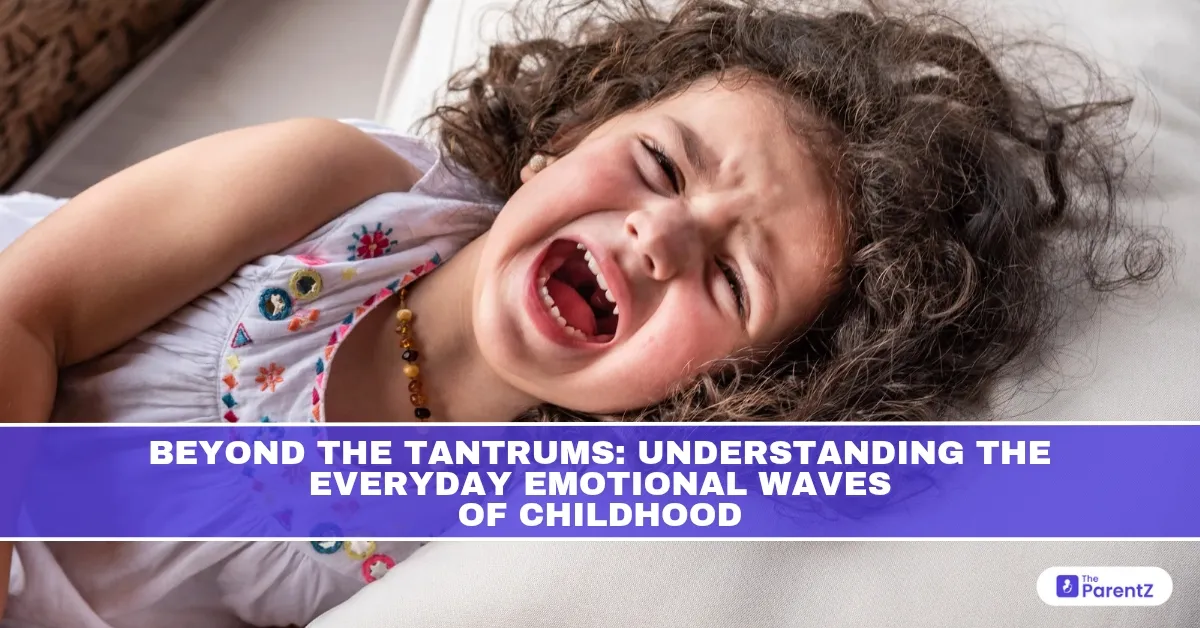This Is Something Every Parent Should Be Aware Of
If you’ve ever felt confused or even exhausted by your child’s sudden mood swings, outbursts, or tears over seemingly small things, you’re not alone. Every parent experiences it. What’s important to remember is: these waves of emotion are normal, necessary, and even healthy.
Understanding the emotional world of children goes far beyond managing tantrums. It’s about seeing their behaviors as communication, not just chaos. And with patience and the right tools, you can help your child ride those waves and eventually sail on their own.
Emotional Waves Are Part of Growing Up
Childhood is a time of rapid brain development. According to research published in Frontiers in Psychology, the brain regions responsible for emotional regulation, like the prefrontal cortex, are still under construction throughout early childhood and even into adolescence.
This means young children:
- Feel emotions intensely
- Have difficulty regulating big feelings
- Are learning for the first time how to manage frustration, sadness, anger, and excitement
Tantrums, meltdowns, clinginess, and mood swings are all natural parts of emotional learning—not signs that something is wrong.
Common Everyday Emotional Waves You Might See
- Overwhelm after a busy day (even fun activities can overload their senses!)
- Frustration when they can’t do something (like tying shoelaces)
- Sadness when they miss a parent or favorite toy
- Jealousy when a sibling gets attention
- Fear of new experiences
Each emotion is a chance for their brain and heart to grow stronger.
PubMed-Backed Insights: The Science Behind the Storm
Several studies highlight how vital emotional support is in early childhood:
- A Pediatrics journal review found that children who are taught emotional regulation skills early show better academic success, healthier relationships, and stronger mental health later in life.
- Developmental Psychology journal emphasizes that responsive parenting (not harsh discipline) helps children form secure emotional foundations.
Simply put: Your reactions to their emotions shape how they learn to manage emotions themselves.
How to Support Your Child Through Emotional Ups and Downs
1. Stay Calm and Present
When your child is having a big feeling, your calmness is contagious. Kneel to their eye level, offer gentle words, and breathe deeply yourself.
Remember: “Their storm is not my storm.”
2. Name the Emotion
Helping your child label their feelings boosts emotional literacy.
- Instead of “Stop crying,” try: “It looks like you’re feeling really frustrated. It’s okay to feel that way. I’m here.”
This teaches them emotions are manageable, not scary.
3. Validate Before You Redirect
Even if you can’t “fix” the situation, validating how they feel matters.
- “It’s hard when we have to leave the park. I understand you’re upset.”
Only after acknowledging the feeling should you suggest problem-solving or moving forward.
4. Create Routines
Predictable routines (like bedtime rituals and mealtimes) reduce emotional overload by giving kids a sense of security.
According to research in Early Childhood Research Quarterly, structured routines are linked to better emotional regulation in preschoolers.
5. Teach Coping Skills Early
Simple techniques like:
- Deep belly breathing
- Stretching
- Hugging a stuffed animal
- Drawing feelings
6. Model Your Own Emotional Regulation
Children learn most by watching. When you talk about your own feelings healthily (“I’m feeling tired today, so I’m taking deep breaths”), you show them how it’s done.
When to Seek Additional Support
While emotional waves are normal, some signs could indicate deeper challenges, such as:
- Persistent, extreme outbursts beyond developmental expectations
- Withdrawal from activities they normally enjoy
- Sudden regression in skills (like toilet training)
- Signs of anxiety interfering with daily life
If you notice these, consider talking to your pediatrician or a child therapist for guidance.
Conclusion: Riding the Waves Together
Childhood is a beautiful, bumpy, emotional ride. When we, as parents, understand the deeper meaning behind the outbursts and big feelings, we become their anchors, the safe place they can return to as they learn to navigate life’s tides.
You don’t have to fix every problem or calm every storm. Being present, listening, and offering love is often enough. In doing so, you teach your child the most valuable lesson of all: Feelings are safe, feelings are manageable, and no feeling lasts forever.








Be the first one to comment on this story.